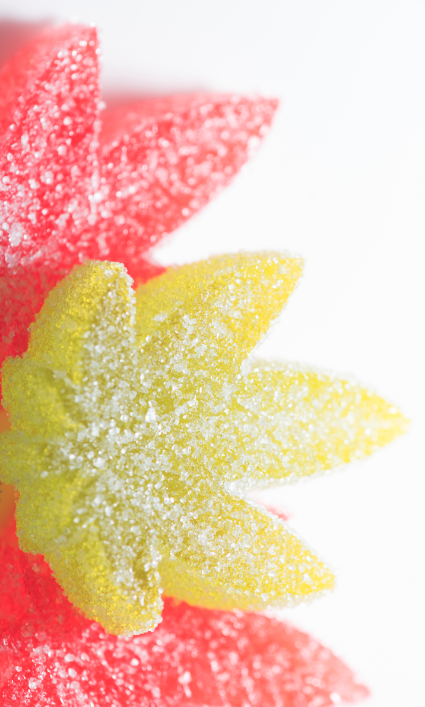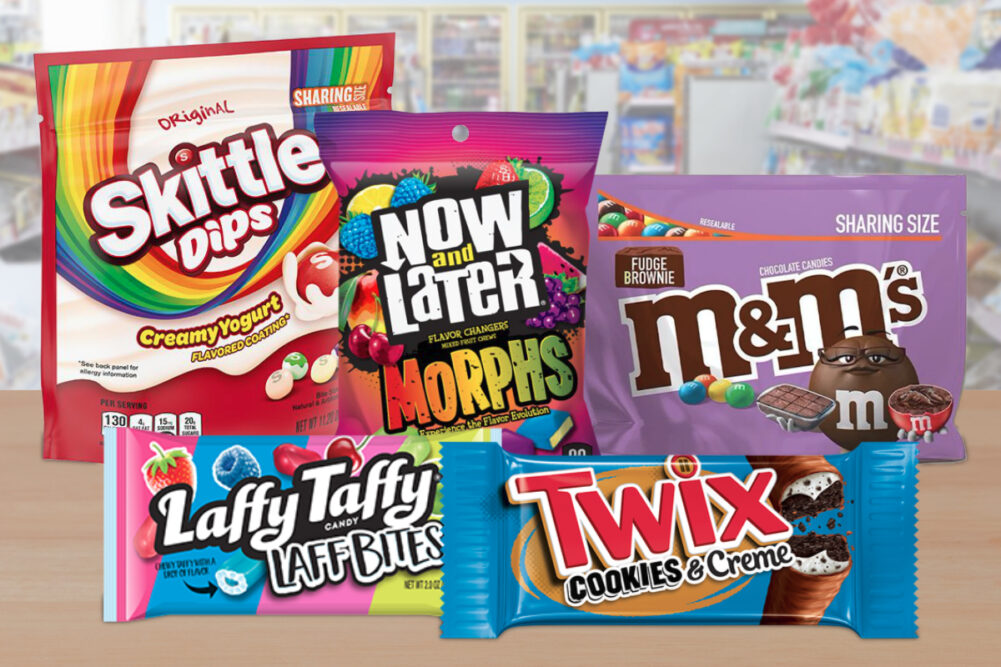KANSAS CITY – Premium chocolate and candy products that offer an element of novelty are trending in new confectionery launches.
Consumers are seeking unusual colors, popping candy, hot and spicy options, cooling effects, and interactive, personalized packaging, according to Innova Market Insights, Arnhem, The Netherlands.
“In light of rising health awareness, consumers are not necessarily reducing confectionery consumption levels,” said Lu Ann Williams, director of innovation at Innova Market Insights.
Multiple flavors, textures and colors add a modern spin to classic brands, including Now and Later and Laffy Taffy. “Poppability” and “sensory excitement” are among key trends in product development at Ferrara Candy Co., Oakbrook Terrace, Ill.
The company introduced Now and Later Morphs, an assortment of chewy candies featuring flavors that transform from cherry to mango, lemon lime to strawberry, grape to watermelon and blue raspberry to lemon. Laffy Taffy Laff Bites are unwrapped, candy-coated taffy bites in cherry, strawberry, green apple and blue raspberry flavors.
Mars Wrigley Confectionery, Hackettstown, N.J., is embracing the trend of flavor mash-ups. Launching in 2020, Skittles Dips combine chewy, fruit candies with a soft, yogurt-flavored coating. Also on tap is Twix Cookies & Crème, featuring chocolate cookie bars layered with crème and cookie bits and enrobed in milk chocolate.
M&M’s Fudge Brownie, another new product, has a fudgy filling and is the third M&M’s variety to feature a soft and chewy center, following the launches of M&M’s Caramel and M&M’s Hazelnut Spread candies. Developing the proprietary technology to produce the candies was a multi-year effort and among the company’s largest technical endeavors.
Investing in quality
Longstanding brands are introducing new formulations and forms to remain relevant to today’s consumer. Boyer Candy Co., Altoona, Pa., the maker of Clark Bar, launched Clark Cups, which are peanut butter cups incorporating the century-old chocolate bar brand’s signature crunch. Boyer, which produces the Mallo Cup, bought the rights, recipes and equipment for the Clark Bar brand in 2018 after its previous owner, The New England Confectionery Co., filed for bankruptcy.
The Chick-O-Stick from Atkinson Candy Co., Lufkin, Texas, features an updated recipe with simple ingredients and more peanut butter. The product, characterized by its flaky, crunchy combination of peanut butter and toasted coconut, originated in the 1940s. Atkinson said it has removed artificial red and blue coloring in favor of colors derived from turmeric and vegetable juice concentrate.
 Ferrero North America, Parsippany, N.J., is benefiting from investments in increased marketing and recipe improvements for the chocolate brands formerly owned by Nestle USA, Arlington, Va., including Butterfinger, Baby Ruth and Crunch.
Ferrero North America, Parsippany, N.J., is benefiting from investments in increased marketing and recipe improvements for the chocolate brands formerly owned by Nestle USA, Arlington, Va., including Butterfinger, Baby Ruth and Crunch.
“The United States is the No. 1 confectionery market in the world,” said Paul D. Chibe, president and chief executive officer of Ferrero North America. “We believe there is still significant opportunity to grow the business here as people look for quality. Our company is known for quality. And that’s where the megatrend is.
“People are looking for better products in every class of food, beverage and at home. We happen to be a company that has a 70-year legacy of being maniacally focused on quality, and it’s playing to our strengths right now.”
Millennials are changing the purchasing patterns for chocolate and are more likely to choose small-batch products with unique flavors and textures and high-quality ingredients, according to a report released by the National Confectioners Association.
“We found that the fine chocolate consumer is generally younger, more socially conscious and more driven by experimentation and trial, even if they already have a favorite chocolatier,” said Bill Guyton, executive director of Fine Chocolate Industry Association. “Fine chocolate consumers believe small-batch chocolate has a superior taste and are willing to seek it out, visiting farmer’s markets, festivals and specialty online channels more frequently than other chocolate consumers.”
Cannabis in candy
Cannabis is a friend and foe to the confectionery industry, said Marcia Mogelonsky, Ph.D., director of insight at Mintel Food & Drink, Mintel. The effect of a growing recreational marijuana market may create major challenges as well as opportunities for manufacturers.
“The most popular way to enjoy recreational marijuana is through edibles, including chocolate and candy,” Dr. Mogelonsky said during a presentation at the Sweets & Snacks Expo, held May 21-23 in Chicago.
 Recreational marijuana is legal in 10 states and the District of Columbia, Canada and several European markets. In a survey of legal cannabis users, 58% said they are interested in chocolate candy edibles, and 47% are interested in sugar confectionery edibles, according to Mintel.
Recreational marijuana is legal in 10 states and the District of Columbia, Canada and several European markets. In a survey of legal cannabis users, 58% said they are interested in chocolate candy edibles, and 47% are interested in sugar confectionery edibles, according to Mintel.
“There’s going to be lots of room to develop chocolate and gummies and gum with recreational marijuana in them,” she said. “There’s a synergy … and it’s especially popular among the youngest cannabis users. They’re in fact trading alcohol use for cannabis use, and they’re getting their cannabis through candy.”
In the case of cannabis, established confectionery companies may develop completely new brands marketed to adults for the edibles market, she said.
“That has got to be key, is making sure these things do not appeal to kids,” she said.





